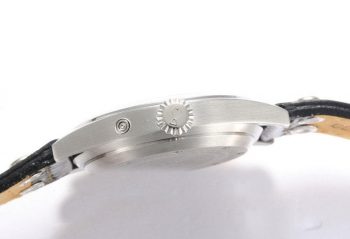
There's no doubt that the new Pilot's Watch Chronograph Top Gun Edition "Mojave Desert" made the biggest splash since IWC released a whole collection of new pilots' timepieces at SIHH earlier this month. With a warm sand-tone ceramic case, this Top Gun is a limited edition with mixed colors which are inspired by the China Lake Naval Air Weapons Station, and it's home in the dramatic landscape of the celebrated California desert.
What makes the Top Gun Edition "Mojave Desert" (ref IW389103) feels like a piece of desert-spec kit is absolutely a significantly militaristic vibe aided by the dark brown dial, tan markings, and the use of a 44.5mm case size (15.7mm thick). A tapered beige textile strap with a captive deployment clasp and leather lining finished the appearance perfectly. While comfortable and a good match for the case and dial, I can't help imagining that the Mojave LE would look stunning on a NATO-like most cheap pilot's watches. 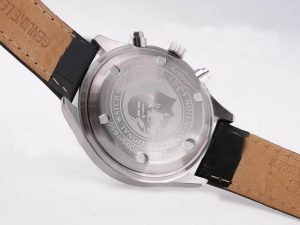
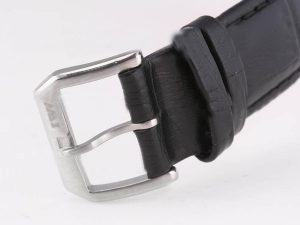 Like many of the new IWC pilot's timepieces, the Top Gun Edition "Mojave Desert" adapts one of the brand's in-house 69000-series chronograph movements. With a 12-6-9, layout, and a day/date display at three, this Top Gun uses the 69380 calibers, which is automatically wound, ticks at 4 Hz, and 46-hour power reserve can be offered. With a max chronograph measure of 12 hours, the Mojave LE has a soft inner iron case to help with magnetism, a solid titanium case back, and a double AR-treated sapphire crystal upfront, which is also designed to prevent sudden drops in air pressure, for those who are more adventurous pilots, there's no better than it.
The Mojave LE is light and feels rather solid although its size is nearly too much for my wrist, which is definitely due to the ceramic case. Legibility is outstanding and though I prefer the ergonomics of the new 41mm chronographs, I really like the way the Mojave LE looks on the wrist. It's tough but kind of warm and it manages a military aesthetic that isn't as overdone as the "full black" treatment, nor as goofy as camo or an insignia printed on the dial.
The Pilot's Watch Chronograph Top Gun Edition "Mojave Desert" is a modern continuation of IWC's connection with military pilots, with only 500 limited pieces and priced at $8,200 which are cheaper than other comparable ceramic replica watches from Omega, Zenith, and even IWC. It's certain that the Top Gun Edition "Mojave Desert" is a limited ceramic timepiece that indeed makes a particular style, a solid in-house chronograph movement, and a whole lot of wrist presence for you. How amazing it is!
Like many of the new IWC pilot's timepieces, the Top Gun Edition "Mojave Desert" adapts one of the brand's in-house 69000-series chronograph movements. With a 12-6-9, layout, and a day/date display at three, this Top Gun uses the 69380 calibers, which is automatically wound, ticks at 4 Hz, and 46-hour power reserve can be offered. With a max chronograph measure of 12 hours, the Mojave LE has a soft inner iron case to help with magnetism, a solid titanium case back, and a double AR-treated sapphire crystal upfront, which is also designed to prevent sudden drops in air pressure, for those who are more adventurous pilots, there's no better than it.
The Mojave LE is light and feels rather solid although its size is nearly too much for my wrist, which is definitely due to the ceramic case. Legibility is outstanding and though I prefer the ergonomics of the new 41mm chronographs, I really like the way the Mojave LE looks on the wrist. It's tough but kind of warm and it manages a military aesthetic that isn't as overdone as the "full black" treatment, nor as goofy as camo or an insignia printed on the dial.
The Pilot's Watch Chronograph Top Gun Edition "Mojave Desert" is a modern continuation of IWC's connection with military pilots, with only 500 limited pieces and priced at $8,200 which are cheaper than other comparable ceramic replica watches from Omega, Zenith, and even IWC. It's certain that the Top Gun Edition "Mojave Desert" is a limited ceramic timepiece that indeed makes a particular style, a solid in-house chronograph movement, and a whole lot of wrist presence for you. How amazing it is!
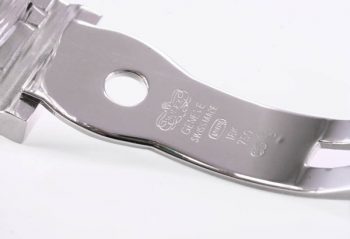
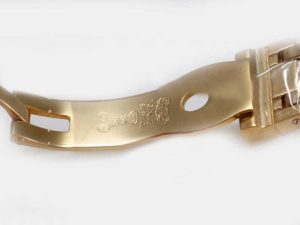 That tremendous capital investment has to be recouped. So obviously, an in-house movement will be more expensive than a mass-produced third-party one. And naturally, it will be marketed as being more prestigious.
The fact is that it matters hardly at all where a movement comes from and matters enormously what is done to say movement before it is cased up in a watch and ready to be sold: how much it has been modified or improved. Perhaps the best way to illustrate the silliness of this debate: the replica Breitling and Tudor's movement-sharing collaboration.
The main trouble is transparency - or the lack of it. All of the obfuscation about in-house movements erodes trust. However, please notice that some of the most genuinely "in-house" brands don't even bother to use the term: affordable fake Rolex and Seiko, we're looking at you.
That tremendous capital investment has to be recouped. So obviously, an in-house movement will be more expensive than a mass-produced third-party one. And naturally, it will be marketed as being more prestigious.
The fact is that it matters hardly at all where a movement comes from and matters enormously what is done to say movement before it is cased up in a watch and ready to be sold: how much it has been modified or improved. Perhaps the best way to illustrate the silliness of this debate: the replica Breitling and Tudor's movement-sharing collaboration.
The main trouble is transparency - or the lack of it. All of the obfuscation about in-house movements erodes trust. However, please notice that some of the most genuinely "in-house" brands don't even bother to use the term: affordable fake Rolex and Seiko, we're looking at you.